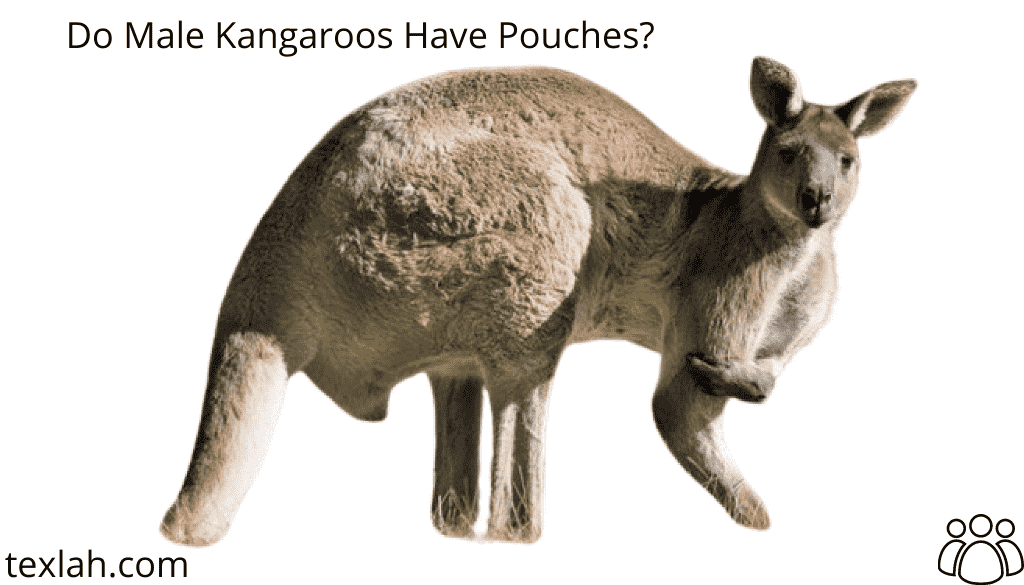No, male kangaroos do not have pouches. The distinctive pouch is a specialized anatomical feature exclusive to female kangaroos. It serves as a protective chamber for nurturing and carrying their young joeys. The absence of pouches in male kangaroos is a clear distinction in their reproductive anatomy. Male kangaroos, instead, are equipped powerful hind legs and a robust tail, utilizing these features for activities such as mating rituals and territorial displays. Understanding the gender-specific roles and adaptations in kangaroos provides insight into the evolutionary strategies that have allowed these marsupials to thrive in the unique ecosystems of Australia.
In the enchanting world of marsupials, the kangaroo stands out as an iconic symbol of Australian wildlife. Yet, a lingering question often arises: Do male kangaroos have pouches? Join us on a captivating exploration as we delve into the intricacies of kangaroo anatomy, demystify the purpose of the pouch, and uncover the surprising truth behind whether male kangaroos possess this fascinating feature.
Read More: What Eats Penguins?
Why do Kangaroos have Pouches?
Kangaroos possess pouches as an extraordinary adaptation designed to nurture and protect their young joeys. This unique anatomical feature is exclusive to female kangaroos and serves as a specialized chamber for the development of their offspring. The pouch provides a secure environment for newborn joeys, allowing them to continue their development outside the womb in a protected space.
Evolutionarily, this adaptation has proven to be a remarkable strategy for kangaroos, allowing them to thrive in the diverse and often challenging landscapes of Australia. The pouch ensures the survival of the next generation by providing a safe haven for vulnerable joeys during their early stages of life, showcasing the ingenuity of nature in equipping kangaroos for successful reproduction and adaptation in their native habitats.
Kangaroo Pouch Anatomy
To answer the query, it’s crucial to understand the unique anatomy of a kangaroo’s pouch. Primarily, the pouch is a specialized feature exclusive to female kangaroos, designed to cradle and nurture their young joeys. This evolutionary adaptation is not present in male kangaroos, whose reproductive anatomy differs significantly.
Reproductive Roles of Male Kangaroos
While male kangaroos lack pouches, their reproductive roles are no less intriguing. Male kangaroos are equipped distinctive features such as powerful hind legs and a sturdy tail, which they use for balance and agility during mating rituals and territorial disputes. Understanding the distinct functions of male kangaroos sheds light on the fascinating dynamics in kangaroo populations.
Purpose and Significance of the Female Kangaroo Pouch
The female kangaroo pouch serves as a nurturing haven for developing joeys, providing a safe environment for their initial stages of growth. Female kangaroos have a unique ability to pause the development of an embryo until environmental conditions are favorable, showcasing the remarkable adaptability of kangaroos to their surroundings.
Evolutionary Insights
Exploring the absence of pouches in male kangaroos offers valuable insights into the evolutionary adaptations that have shaped these marsupials. The kangaroo’s reproductive strategies and pouch dynamics provide a compelling narrative of survival and adaptation in the diverse landscapes of Australia.
When does a baby kangaroo leave its mother’s pouch?
A baby kangaroo, known as a joey, typically begins to leave its mother’s pouch and explore the outside world at around 6 to 7 months of age. However, the exact timing can vary among different kangaroo species. Initially, the joey’s ventures outside the pouch are brief, and it may continue to return to the safety of the pouch for rest and nourishment. Over time, as the joey grows and becomes more independent, it gradually spends more extended periods outside the pouch, eventually leaving it altogether. This process marks a significant developmental milestone for the joey, as it transitions to fully relying on its mother’s milk and eventually, solid food.
Conclusion: Do Male Kangaroos Have Pouches?
In conclusion, the question of whether male kangaroos have pouches unravels as we delve into the distinctive reproductive biology of these marsupials. The absence of pouches in males does not diminish their significance; instead, it highlights the specialized roles each gender plays in the survival of kangaroo populations. Join us in this exploration as we uncover the mysteries of kangaroo pouches and gain a deeper appreciation for the complexities of life in the Australian outback.
Discover in-depth and reliable information on Texlah, your go-to platform for insightful content.

